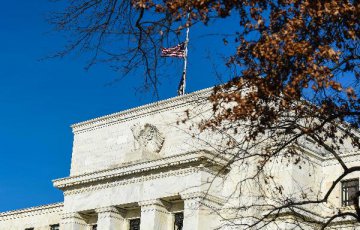
A more accommodative Federal Reserve and the prospects for a relatively stable U.S. economic growth have eased Wall Street's nervousness lately and left investors only one focus: the progress of China-U.S. trade talks.
As the latest China-U.S. negotiations commenced on Monday, U.S. equities ended the day's trading with little change. The S&P 500 and the Nasdaq edged up 0.07 percent and 0.13 percent respectively, while the Dow erased 0.21 percent.
Behind the seemingly indifferent market reaction are anxious investors waiting for the results of the latest round of talks, analysts have said.
"U.S. equities have made an impressive move to the upside since bottoming out on Christmas. A big part of this is due to optimism over the possibility of a trade agreement being reached between China and the United States," said Mark Otto, an experienced New York Stock Exchange trader and global market commentator at GTS. GTS is a leading electronic market maker across global financial instruments.
The S&P 500 plunged to 2,351.1 on Dec. 24 and rallied to as high as 2,731.61 on Wednesday. It now stands at 2,709.80, still over 30 points to go to reach its 200-day moving average, one of the most popular technical indicators used by investors to help analyze price trends.
The rally lost momentum because "the deadline for the negotiations is approaching and there are concerning reports that a draft document has yet to be created," said Otto.
As a result, the market saw a pull back and the S&P 500 has been gravitating around its 100-day moving average of 2,700.
Trade issues have implications on the global economy. Consequently the impact on the market is measured by corporate earnings and the cost of doing business.
About 67 percent of the S&P 500 companies have reported earnings for the fourth quarter last year, and 71.5 percent of them have reported earnings above analyst expectation, according to the latest statistics from Thomson Reuters. Fourth quarter earnings are expected to increase 16.8 percent from the same period in 2017.
However, first-quarter this year's profit growth expectations have diminished. Analysts now see strong possibility of zero growth for the first quarter and S&P stocks trading at 17 times earnings multiples, which would mark the first contraction since the second quarter of 2016.
Multinational companies that are more exposed to global trade have already lowered the guidance for 2019.
Equipment manufacturer Caterpillar saw its shares dropping 9.13 percent on Jan. 28 after the company said it expected 2019 profit to reach a range of 11.75 U.S. dollars to 12.75 dollars per share. The company said a slowdown in sales in China, higher material and freight costs due to tariffs, steel prices and supply chain inefficiencies impacted its earnings results.
Nvidia shares sank nearly 14 percent after the chipmaker cut its revenue guidance for the fourth quarter from 2.7 billion dollars to 2.2 billion dollars on Jan. 28.
The company attributed weaker guidance to deteriorating macroeconomic conditions.
Looking forward, analysts have pointed out that permanent tariff will have a significant impact on U.S. economy.
Since the United States began imposing a 25 percent tariff on washing machines and solar panels, the tariffs affected about 12 percent of goods imported into the country and raised roughly 42 billion dollars in tariff revenues, according to a report French bank Soeciete Generale released on Monday.
The report said that the "tariffs work like a tax, and on the whole, we consider them negative for the U.S. economy."
Investors of the equities market wish the countries could reach some kind of agreement by March 1 because trade uncertainty can limit investment, curb equity values and prompt larger reductions in activity.
"When there is more certainty the investors will get more involved," said John Monaco, a trader at Wellington Shields & Co. LLC who is optimistic that China and the United States will settle the trade issues soon because a deal will be beneficial for both economies.
In the event that an agreement is reached or the deadline is extended, Otto believed the market will rally back towards the S&P 500's 200-day moving average.
"If we can breach that level the rally could continue on," said Otto.
If no deal is made by the deadline, he said, a potential market sell-off will drag S&P 500 towards the 50-day moving average of 2,616.





















Latest comments